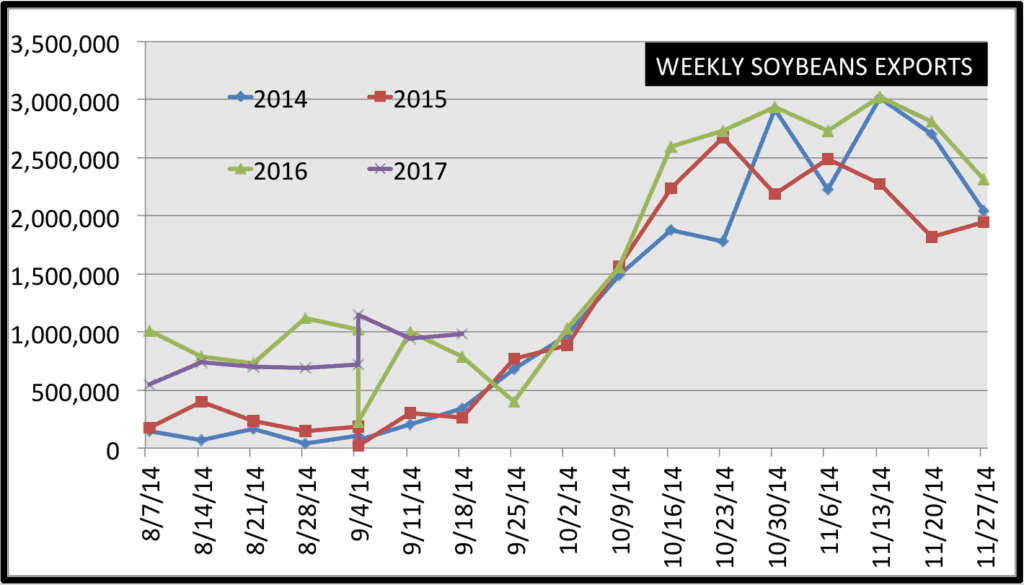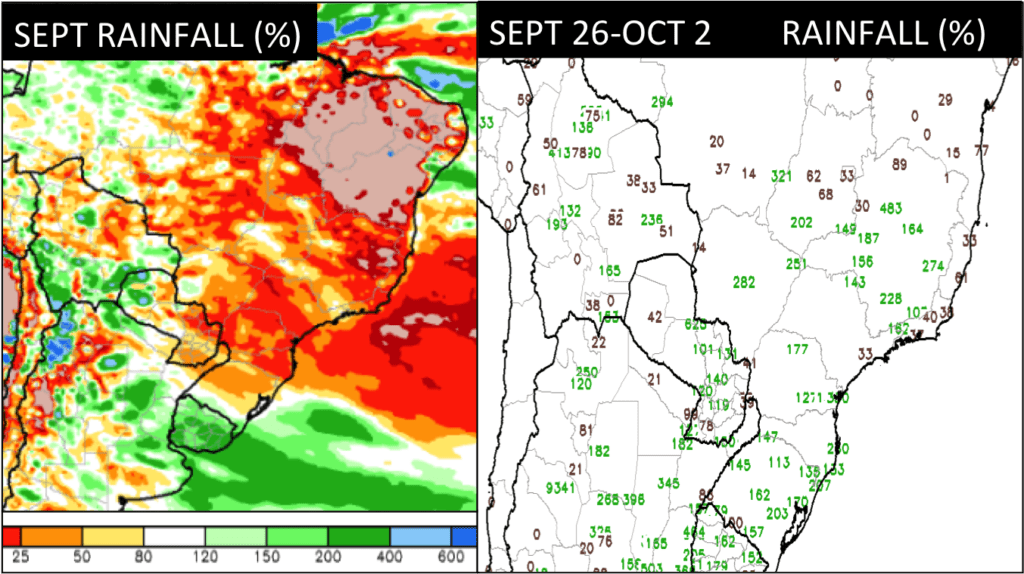Soybean price image source: Barchart.com
Soybeans futures have been on a bit of a roller coaster ride since mid-summer. Prices peaked in early July as drought conditions in parts of Iowa were occurring. With several weeks left in the main part of growing season, traders were worried that yields could diminish if the dry, hot weather continued. Rainfall picked up in late July, allowing concerns to wain. Our research at that time suggested August weather would remain beneficial, with abnormally cool temperatures forecasted for the Midwest. Then, we took that information and examined the timing of lowest November Soybeans futures price during August through October. A strong pattern of late season price-bottoms appeared in years with cool Augusts.
The USDA WASDE report in early August surprised some out there, with a 49.4 bu/ac yield estimate for soybeans. That caused a large price drop that you can see in the featured image. Most industry guesses had the August estimate lower than the July WASDE estimate (48 bu/ac), not higher than it! Our cool August forecast materialized and we began to look ahead to the next USDA report. The cool August dataset again came in handy. The change in yield estimates from the August to September report is plotted below. The majority of cool Augusts had slight increases in yield estimates.
Positive market impacts
Our WASDE report analogs verified, with an second increase in soybean yields to 49.9 bu/ac, causing a large U.S. harvest continues to loom over traders. However, prices generally increased late August & early September (except big drop on the WASDE release day, September 12th). A few different events supported the move. First, there was Harvey, which threatened to damage soybean areas along southern parts of the Mississippi river. Prior to the September WASDE, some were still concerned about the dry weather that occured earlier. Another big factor has been the weekly export data. Last few years, China has really ramped up their purchasing of global soybeans. So far, we’ve had similar values to last year.
The other fundamental factor in the market is Brazil & Argentina weather. We are just beginning the planting season (Southern Hemisphere Spring). September was dry for all of Brazil (also got coffee traders excited). A lack of rainfall and low humidity delayed planting in Mato Grasso, one of the northern growing states. Now, rainfall has finally arrived over the past week, brightening outlooks for the season.
Traders will continue to monitor Brazil/Argentina weather, U.S. exports and the large U.S. harvest moving into the end of 2017.
















